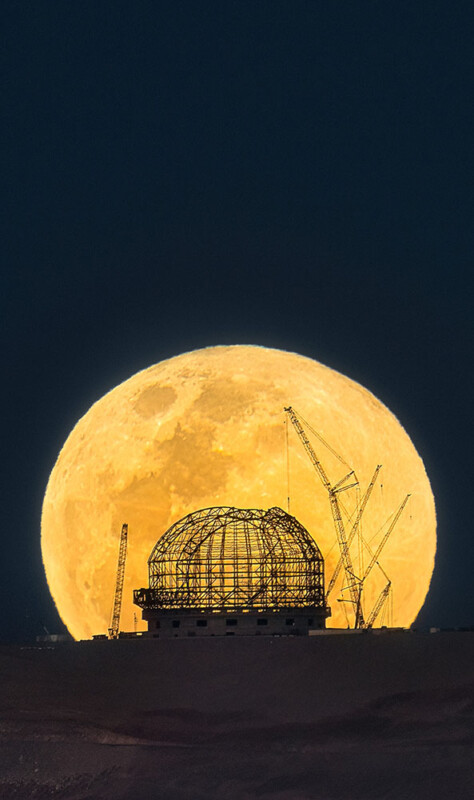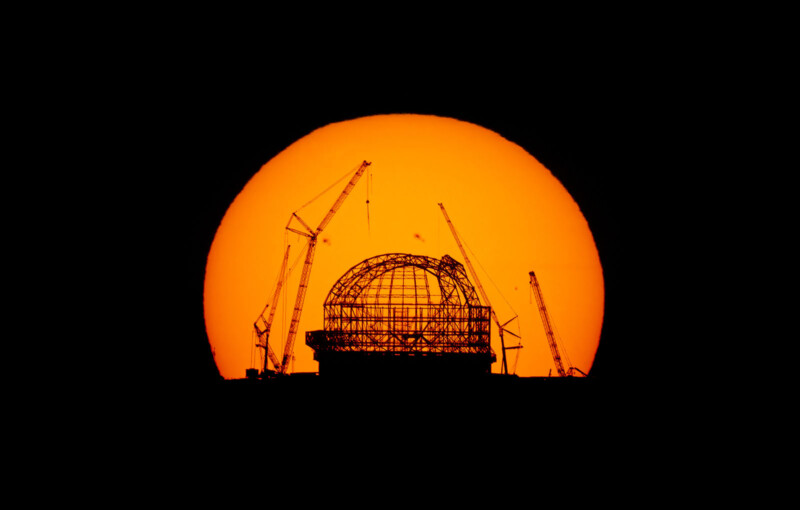Stunning Photo of Hunter’s Moon Rising Over The World’s Largest Telescope
![]()
A team working on the construction of the world’s largest space telescope captured this incredible photo of the full Hunter’s Moon rising behind it.
The European Southern Observatory’s (ESO) Extremely Large Telescope (ELT) published the picture on October 30 two days after it was captured on October 28 on the Cerro Armazones in Chile where the construction of the gargantuan telescope is underway.
The photo was captured 12.4 miles (20 kilometers) away from the observatory and had to be carefully planned because “it’s not every day that the Moon is positioned so perfectly behind the mountaintop.” The Moon appears huge because of an optical effect causing it to appear much larger when it’s close to the horizon versus when it is higher in the sky.
“Not only does the Moon cycle through different phases — new moon, first quarter, full moon, and last quarter — as it orbits around Earth every 27.3 days but its position on the horizon and the time at which it rises change over time as well,” adds the ESO in a press release.

The ESO compared the image to the 1982 Steven Spielberg movie E.T. the Extra-Terrestrial: “E(L)T phone home,” they joke.
The Moon silhouettes the steel skeleton of what will become the world’s largest visible and infrared-light telescope on Cerro Armazones in Chile’s Atacama Desert with the project expected to be completed in 2028.
The ELT will be 120 feet (39.3 meters) wide and house five separate mirrors, the largest of which will be made up of 798 individual hexagonal segments.
“It now stands at a towering 80 meters [262 feet] high; when completed, the whole structure will rotate 360 degrees to observe the night sky, all while weighing 6,100 tonnes — about as heavy as 1,500,000 pumpkins,” says the ESO.

In August, the ESO captured the above spectacular photo showing the ELT under construction from on top of the Cerro Paranal, another mountain 14 miles (23 kilometers) away. The Cerro Paranal is home to the ELT’s older sibling, ESO’s Very Large Telescope (VLT).
Image credits: Courtesy of ESO.